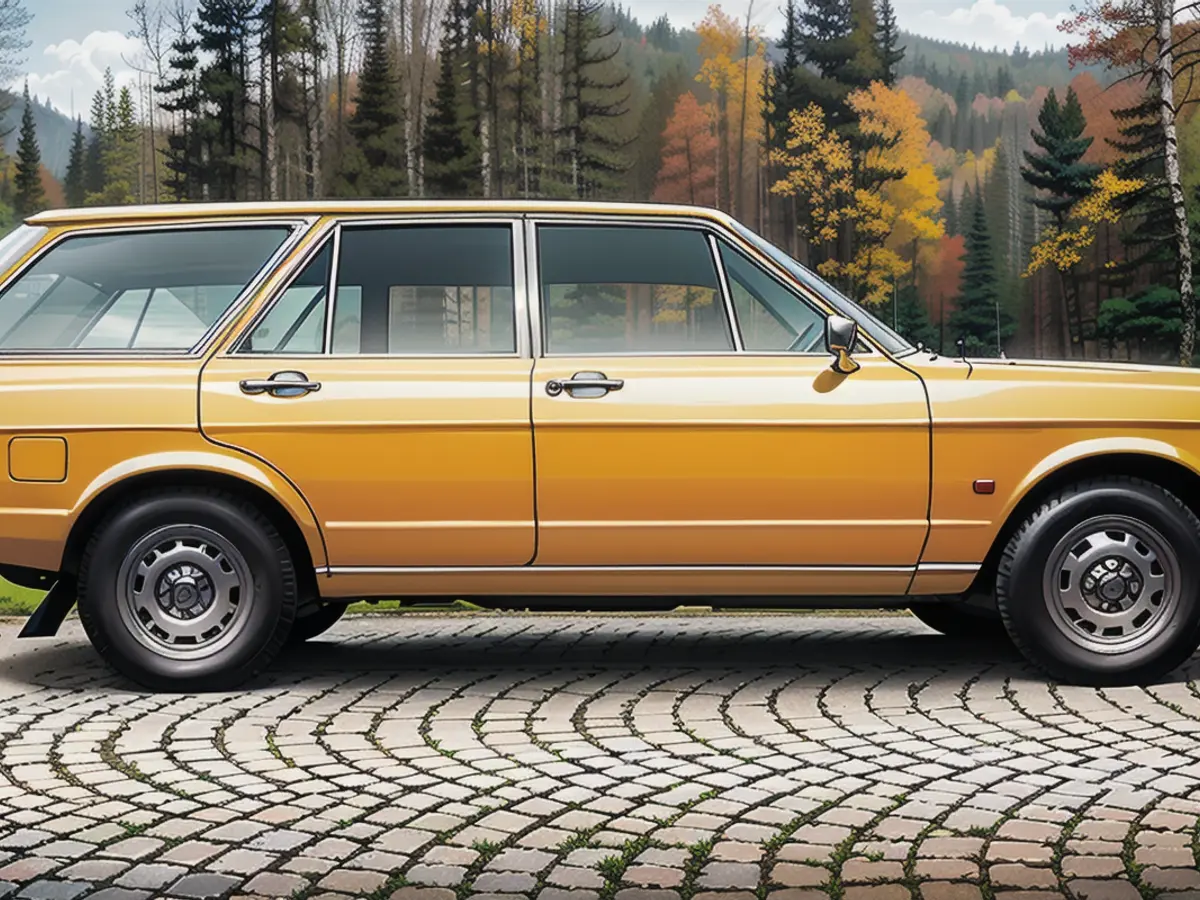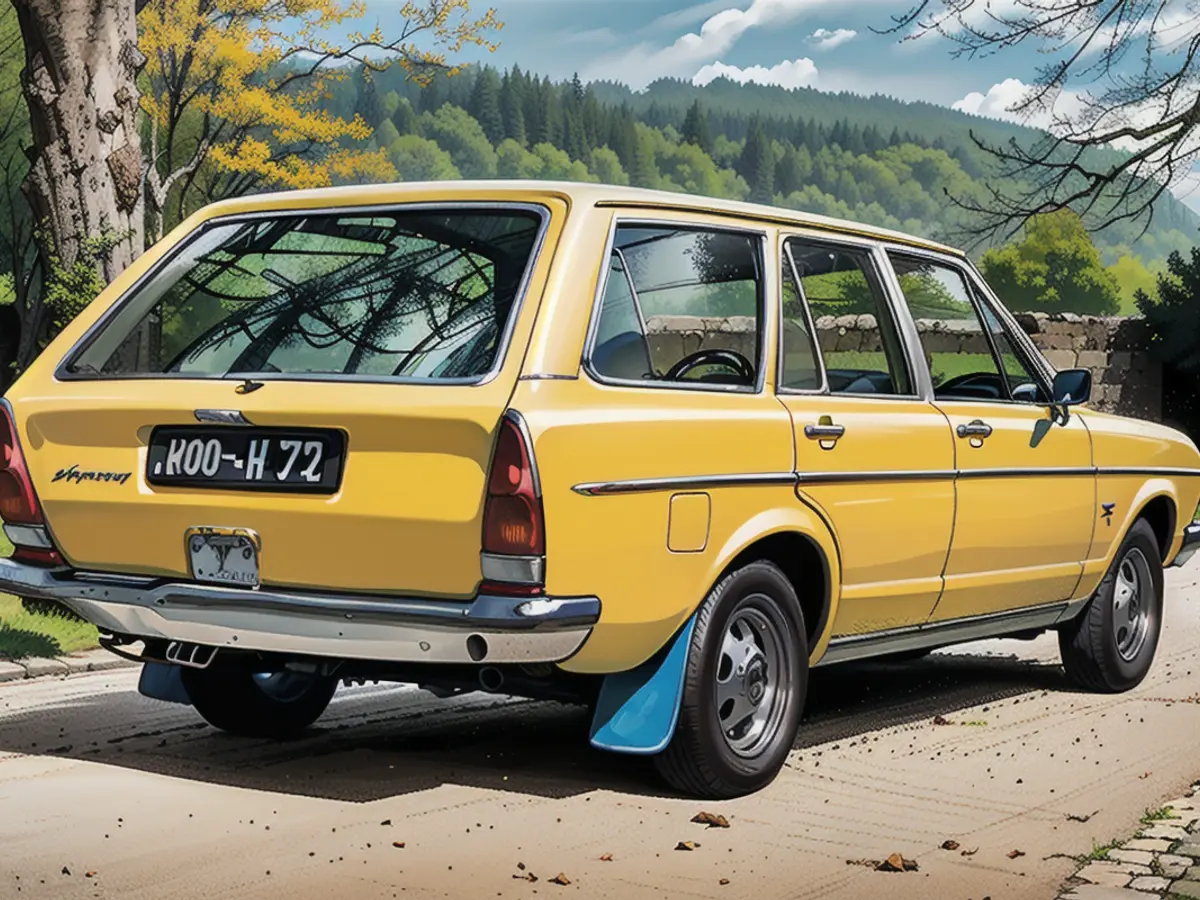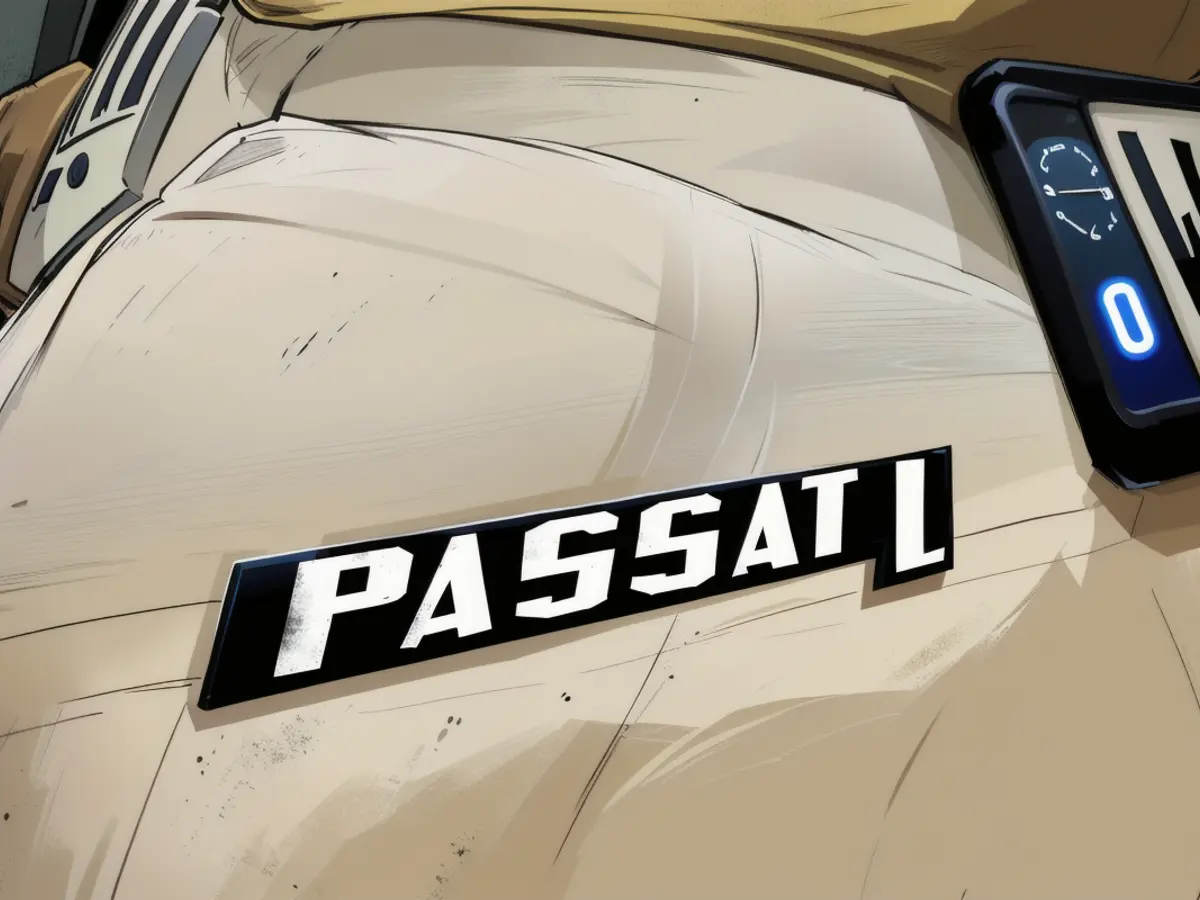Volkswagen Passat: A timeless choice for family transportation.
Sitting behind the wheel of the first Volkswagen Passat, I can't help but feel connected to Germany's automotive history. This iconic car has been a leader in middle-class mobility for over 50 years and has become an integral part of the nation.
Revisiting the past, ntv.de got the chance to test drive the original model, which debuted in 1973. More specifically, they drove the Passat Variant, a late '70s version that instantly gained popularity as an estate car. And it's no coincidence that this year marks the 50th anniversary of this body style. So, what has five decades of automotive innovation brought us? A collective growth with our cars. Just search − height on Google; you'll see we’re now taller than ever. But that's not relevant to our discussion here.
What may seem small compared to modern standards, this Volkswagen from the '70s seems puny in comparison. From our contemporary viewpoint, the 4.22-meter long and 1.60-meter wide Passat seems insignificant. But let's not forget that in its time, it was groundbreaking for the German automotive industry.

The now-defunct air-cooled rear engine is one of the most significant changes we've experienced since those days. These engines would send shivers down passengers' spines during cold winters as the heating system struggled to keep up. Gone too are the days when a sudden push of the accelerator showcased poor road grip, especially on slippery surfaces. The introduction of the front engine and front-wheel drive marked a significant upgrade in safety features.
But its simplicity shouldn't be overlooked. It's reminiscent of a time when vehicles did more with less. For instance, the 1.3-liter four-cylinder engine housed in this first-generation Passat weighed just 1064 pounds and only generated 42 horsepower. That might not sound like much when contrasted with a modern car, but consider the feel of the drive. This vintage vehicle offers a unique driving experience that today's technology doesn't quite capture.

Despite its age, the Old Passat is still great fun to drive. Once the engine warms up—an essential step considering its carbon-based engine—it speeds up rather pleasantly. The 55 hp engine might not seem impressive, but the car's light weight makes it feel zippy and responsive, despite sounding rather rascally. It's all part of its charm. The car's efficiency backs up this unique driving experience, clocking in at a leisurely 16.5 seconds to reach high speeds.
The gear-shifting mechanism doesn't feel as smooth as we've come to expect today and might call for some practice to get used to. However, it's forgiving for those lacking refined skills behind the wheel. A perfect daily driver, a classic Passat can be found at a reasonable price on used car markets under 10,000 euros.

So, while we're conditioned to believe that modern advancements are always better than those from the past, the Passat's first generation reminds us that some things are worth revisiting. With its warm charm, the first generation has firmly cemented its role in Volkswagen's history and will remain a beloved classic for future generations.
But just a warning: don't expect a smooth start. This no-frills engine does best when warmed up. And the smoky tailpipe? Expect some laundry clean-up after your drive.

The estate version is great because it can accommodate more cargo. Unfortunately, you may not want to make full use of its trunk space. You can carefully load it with soft items, though. For example, if you're considering a new museum car from Wolfsburg, you might want to think twice. If you're hesitant about what to look out for when buying, you'll find many enthusiasts of this model online. Check out the Passat-Kartei-Deutschland, for instance, where you'll learn that a major gathering is scheduled in the Netherlands from May 30 to June 2.
Before returning this unique station wagon, I take one last look inside. My attention turns to the vintage instruments and triggers a thought. Didn't they look exactly the same in the first Audi 80 (also known as B1 internally)? That's correct; the Passat and the early Audi 80 share the same foundation. In fact, the Passat is the same car, but with different body styles. The Audi 80 was exclusively available as a notchback at dealerships.

Interestingly, anyone who needed more than 55 horsepower could opt for one of the models with a 1.5-liter engine. These came in 75 or 85 hp options. However, finding a powerful TS version might prove challenging. The reactions to the early Passat are always positive, with people giving a thumbs up and smiles. What more could you ask for?
Read also:
The Volkswagen Passat, debuting in 1973, quickly became a bestseller combination due to its versatility as an estate car. Despite its relatively small size compared to modern standards, the original Volkswagen Passat was groundbreaking in its time, serving as a family carriage classic for many German families.
Fifty years later, the Volkswagen Passat remains a timeless choice for those seeking a unique and charismatic family transportation option, offering a driving experience that modern vehicles often can't replicate.
Source: www.ntv.de








